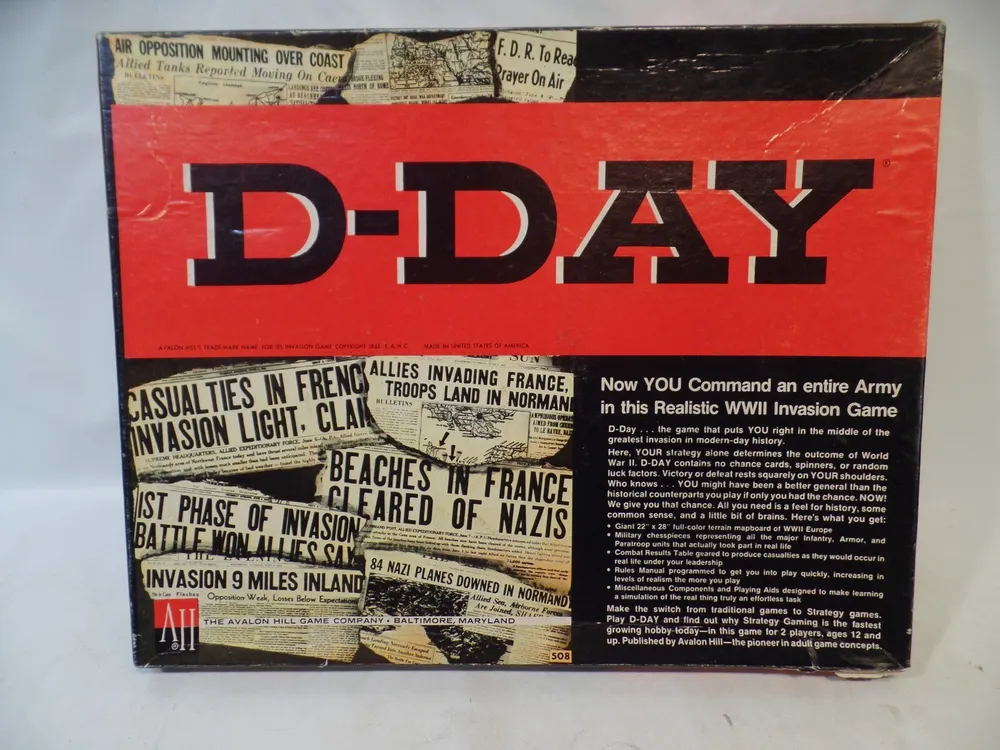D-Day (1961)
D-Day
“D-Day” is a board wargame published by Avalon Hill in 1961, designed to simulate the six months of the European Campaign of World War II, from the Normandy Invasion to the crossing of the Rhine. The game was created by Avalon Hill’s founder, Charles S. Roberts, and was the first wargame to feature both a hex grid map and cardboard counters. The game has gone through several revisions, with the latest one by James Stahler appearing in 1977.
Why is D-Day Popular?
D-Day is a popular and significant board game for several reasons:
– It was the first hex-and-counter wargame to portray the D-Day invasion of Europe.
– The game has a complete historical background and a list of weapons, tanks, and other equipment.
– It allows players to immerse themselves in the historical events of World War II.
Game Components of D-Day
How To Setup D-Day
To set up **D-Day**, the German player first places their counters on the map without revealing the invasion points to the Allied player. The Allied player then decides the invasion area, which can range from the southern coast of France to the North Sea coast. The setup involves careful placement of units to reflect historical dispositions and strategies.
Gameplay Mechanics and Game Objective
– Allied player wins by eliminating all German units from the continent or by getting 10 combat divisions across the Rhine-Issel river line.
– German player wins by eliminating all Allied units or preventing Allied victory conditions by the 50th week.
Player Experience
**D-Day** offers a classic wargaming experience with a focus on strategic and operational management. The game is known for its simplicity and historical feel, although it is criticized for being slow-paced and biased towards the Allies. Players must employ careful planning and strategic decision-making, particularly in the early turns, which are often decisive. The game appeals to beginners due to its relatively straightforward rules but also provides enough depth for experienced players to explore different strategies.
Pros
Cons
Personal Thoughts on D-Day
**D-Day** is a game for those who appreciate the nostalgic value of classic wargames and are willing to engage with its simplicity and historical context. It is ideal for beginners looking to step into wargaming, as well as veterans who enjoy strategic planning and are not deterred by the game’s slower pace. However, it may not appeal to players seeking fast-paced action or highly detailed historical simulations. The game’s revisions over the years have attempted to address some of its shortcomings, but its core charm remains in its classic design and straightforward gameplay.
We are supported by our audience. When you purchase through links on our site, we may earn an affiliate commission, at no extra cost for you. Learn more.

